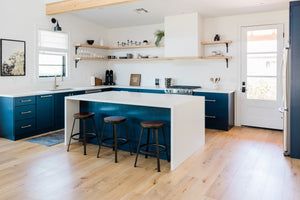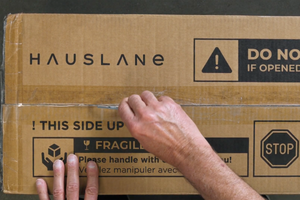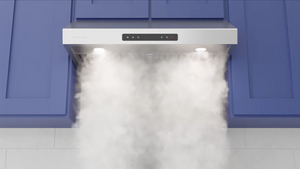The Evolution of the Range Hood: A Journey Through Kitchen Ventilation
The very first range hood was invented in 1926 by Theodore R.N. Gerdes, but the concept of kitchen ventilation dates back to the very beginning of cooking. Let’s take a deeper dive into its storied history, marked by advancements in both design and technology.


The Early Day of Kitchen Ventilation
- Ancient Times: Yes, kitchen ventilation even existed in ancient times! These early civilizations used open fires for cooking. They also used basic chimneys and vents to direct smoke away from living areas and provide relief from indoor air pollution.
- Middle Ages: As European kitchens advanced, so did the means of providing ventilation. Fireplaces and chimneys became more common, allowing for better smoke and fume management.
19th Century Developments
- Industrial Revolution: The Industrial Revolution brought major advancements in home heating and ventilation, but not so much in kitchen ventilation. People most relied on natural airflow and simple ductwork to manage smoke and odors.
Early 20th Century
- Electricity and Gas: The need for better ventilation increased with the advent of electric and gas stoves in the early 20th century. This period saw the introduction of basic exhaust fans to improve kitchen air quality.
- 1920s-1930s: Hello to the first range hoods! These appliances were typically integrated into cabinetry or as standalone units. These early models were often noisy and less efficient compared to today’s standards.
Mid-20th Century
- Post-War Era: Following World War II, there was a surge in housing development and an increased interest in modern kitchen appliances. Range hoods gained popularity as part of the move toward more functional, hygienic kitchen environments.
- The 1950s and 60s: Improved motors, better filters, and more effective ducting systems began to transform range hoods into essential kitchen appliances. By this time, they were becoming standard fixtures in many households.
Late 20th Century
- Design and Functionality: By the 1980s and 90s, homeowners enjoyed better range hood performance and aesthetics. The extractors became quieter and more powerful. Materials such as stainless steel were especially popular.
21st Century
- Advanced Features: Today’s range hoods have advanced features such as LED lighting, touch controls, automatic sensors, and smart home integration. Enhanced filtration systems, such as charcoal and HEPA filters, have significantly improved their efficiency and effectiveness.
- Sustainability: There is an increasing emphasis on energy efficiency and sustainable materials in the design and manufacturing of range hoods. This reflects a broader trend towards environmental responsibility in home appliances.

Present Day
- Design Diversity: Today’s range hoods are available in a wide array of styles, from traditional chimney hoods to sleek, minimalist designs that blend seamlessly into contemporary kitchens. This diversity caters to varied aesthetic preferences and functional needs.
- Global Standards: Modern range hoods adhere to global safety and performance standards, ensuring they are both effective and reliable. These standards reflect a commitment to quality and user safety across different markets.
Shop Modern & Powerful Range Hoods
From HAUSLANE
At Hauslane, we’re driving the innovation of range hoods forward with our commitment to providing a brand new cooking experience. Check out our line of high-quality ventilation products.








